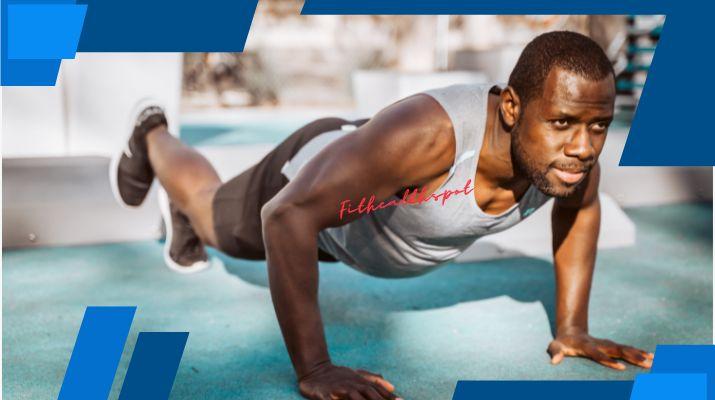Introduction to Calisthenics Workout
In a world flooded with complex gym equipment and trending fitness fads, the appeal of a calisthenics workout stands as a testament to the timeless effectiveness of using one’s body weight for training. But what exactly does a calisthenics workout entail, and why is it a growing trend in the health and fitness community? Whether you’re a beginner eager to kick-start your fitness journey or an experienced athlete looking to diversify your training, this comprehensive guide on calisthenics workouts has something for everyone.
From explaining how to get started with calisthenics to exploring the specialised world of hybrid calisthenics, this guide aims to be your go-to resource for all things related to body-weight training. We’ll discuss the benefits of calisthenics, compare it with traditional weight lifting, and provide targeted workout plans for different muscle groups—legs, back, chest, shoulders, and biceps. We’ll even touch on the equipment that can take your calisthenics workouts to the next level.
So, whether you’re looking to build a chiseled physique, improve your functional strength, or simply find an exercise routine that you can do anywhere, you’ve come to the right place. Let’s dive in!
How to Start Calisthenics
Calisthenics is not just a form of exercise; it’s a journey towards attaining peak physical and mental fitness. If you’ve ever wondered how gymnasts and parkour athletes get so ripped and agile without lifting traditional weights, then you’ve already seen calisthenics in action. But how can you get started with calisthenics and what are the initial steps you should follow? In this section, we’ll cover everything you need to know from the first steps to how to prepare yourself mentally and physically for the journey ahead.
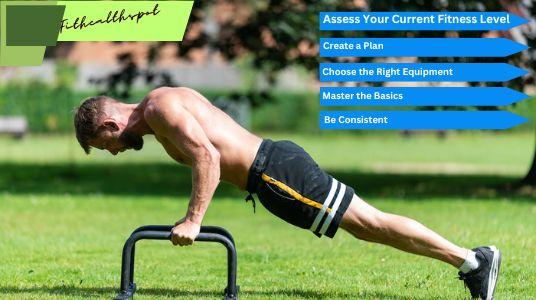
Steps to Get Started
1. Assess Your Current Fitness Level
Before diving into the world of calisthenics, it’s essential to know where you currently stand. Are you a complete beginner, or do you have some level of physical fitness? Knowing this will help you tailor your initial workout routines.

2. Create a Plan
Whether you aim for a hybrid calisthenics approach or wish to focus solely on body-weight exercises, having a plan is crucial. Make sure to include various exercises that target multiple muscle groups.
3. Choose the Right Equipment
Although one of the perks of calisthenics is the minimal requirement for equipment, certain tools like calisthenics bars can make your life easier. We’ll delve deeper into calisthenics equipment later in this guide.
4. Master the Basics
Start with exercises like push-ups, pull-ups, and squats. Mastering these basics will provide a strong foundation for more advanced moves.
5. Be Consistent
Consistency is key when it comes to any form of exercise, and calisthenics is no exception. Stick to your routine and make adjustments as you progress.
For a deeper dive into basic exercises, check out our beginner calisthenics workout guide.
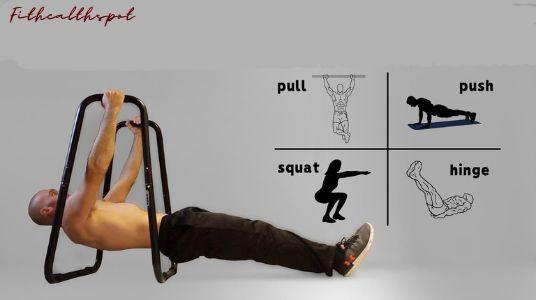
Preparing Yourself for the Journey
Physical Preparation
Aside from the exercises themselves, warming up is crucial. Warm-ups like lunges can help prepare your muscles for the intensive workouts ahead. For more on lunges, read our comprehensive lunges exercise guide.
Mental Preparation
Calisthenics is as much a mental challenge as it is a physical one. Establishing attainable objectives and monitoring your advancement can help maintain your motivation.
Nutritional Consideration
Your diet plays a significant role in your calisthenics journey. Make sure you are fueling your body with the right nutrients to aid in recovery and muscle growth.
Safety Measures
Understanding your body’s limitations is crucial to avoiding injuries. Always listen to your body and don’t push too hard, too fast. Learn more about safety and variations in exercises through our hyperextensions guide.
In summary, starting calisthenics is not just a commitment to exercise; it’s a lifestyle change. As you work through the basics, don’t forget to pay attention to your mental well-being and nutritional needs. The journey may be long, but the rewards are worth it.
Calisthenics vs Weights
In the realm of fitness, the debate between calisthenics and weightlifting is almost as old as the disciplines themselves. Both have their own set of advocates, and both have proven effective in achieving various fitness goals. But how do they stack up against each other? Let’s delve into their differences, similarities, and find out which one might be the right fit for you.

Differences and Similarities
Equipment Needs
While calisthenics often requires minimal equipment, focusing mostly on body-weight exercises, weightlifting necessitates the use of dumbbells, barbells, and often, specialized gym machines.
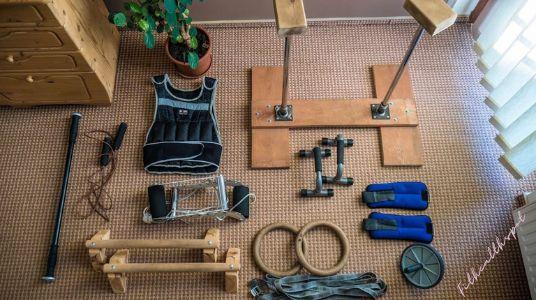
Target Outcomes
Calisthenics primarily enhances functional strength and flexibility. Weightlifting, on the other hand, is more targeted towards muscle hypertrophy and raw power.
Workout Locations
Calisthenics are typically possible in various locations, including parks, your residence, or dedicated calisthenics facilities. Weightlifting usually requires a more structured environment like a traditional gym.
Complexity
Weightlifting exercises can be isolated to target specific muscles, whereas calisthenics often engages multiple muscle groups simultaneously, making the movements more compound and holistic.
Which One is Right for You?
Choosing between calisthenics and weightlifting boils down to your personal fitness goals. If you’re looking for functional strength, agility, and the freedom to workout anywhere, calisthenics may be your go-to. If you’re looking to bulk up and are interested in raw strength, weightlifting could be more aligned with your goals. It’s also worth considering a hybrid approach that combines elements of both.To explore weightlifting exercises that focus on the lower body, check out our complete guide on sumo deadlifts.
Calisthenics Benefits
The beauty of calisthenics lies not just in its simplicity but also in the myriad of benefits it offers. This section will dive into the various advantages of engaging in a regular calisthenics workout routine.
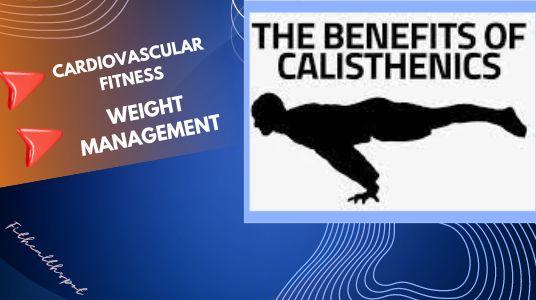
Health Benefits
Cardiovascular Fitness
Calisthenics exercises like jumping jacks and burpees offer great cardio benefits, improving your heart health.
Weight Management
Due to its high-intensity nature, calisthenics can be a useful tool in burning calories and managing your weight.
Improved Mental Health
The endorphin release during a calisthenics workout can contribute to enhanced mood and mental well-being.
Functional Fitness Advantages
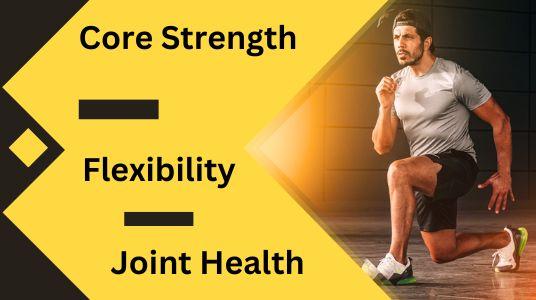
Core Strength
Exercises like planks and leg raises are excellent for building a strong core, essential for everyday activities.
Flexibility
Movements in calisthenics often require a wide range of motion, helping improve your flexibility over time.
Joint Health
Unlike weightlifting, which can sometimes put excessive stress on your joints, calisthenics provides a more joint-friendly workout regimen. For an alternative workout that also offers numerous benefits, see our guide on HIIT workouts.
Beginner Calisthenics Workout
Calisthenics may seem intimidating at first, especially when you see advanced practitioners pulling off intricate moves. But everyone has to start somewhere, and this section aims to equip beginners with the basic moves and a sample routine to get started.

Basic Moves for Starters
1. Push-Ups
The push-up is a foundational upper body exercise that targets your chest, shoulders, and triceps.
2. Pull-Ups
Pull-ups work on your back and biceps and serve as an excellent introduction to upper body strength training.
3. Squats
Squats focus on your legs and glutes, playing a crucial role in developing lower body strength. To learn more about leg workouts, check out our guide on the best calf exercises.
4. Planks
An excellent exercise for core stability and strength.
A Sample Beginner’s Routine
- Push-Ups: 3 sets of 10 reps
- Pull-Ups: 3 sets of 5 reps
- Squats: 3 sets of 12 reps
- Planks: 3 sets of 30 seconds each
Remember to take adequate rest between sets and to adjust the repetitions based on your fitness level.
Hybrid Calisthenics
What is Hybrid Calisthenics?
Hybrid calisthenics is a training approach that combines elements of traditional calisthenics with weightlifting or other training methodologies. This gives you the functional benefits of body-weight exercises along with the muscle-building advantages of weightlifting.
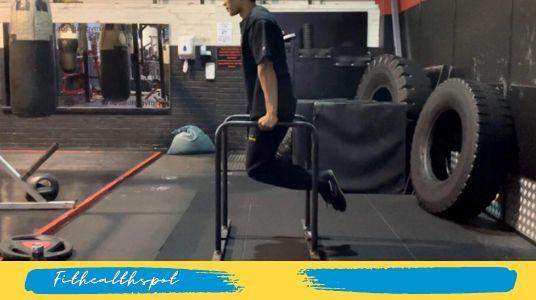
How to Incorporate Hybrid Techniques
- Weighted Pull-Ups: Add weight using a belt or a backpack to make pull-ups more challenging.
- Pistol Squats with Dumbbells: Incorporate weights into classic calisthenics moves.
- Use Resistance Bands: Add resistance to exercises like push-ups and squats for an extra challenge.
For another hybrid approach, take a look at our guide on HIIT workouts.
Calisthenics Equipment
Essential Tools for Training
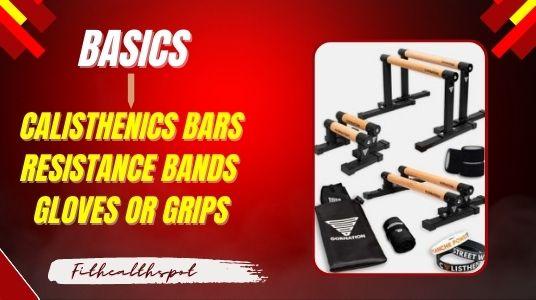
While one of the perks of calisthenics is the minimal equipment requirement, having the right tools can elevate your training.
- Calisthenics Bars: Ideal for pull-ups, dips, and various other exercises.
- Resistance Bands: Great for adding resistance to your workouts.
- Gloves or Grips: To prevent blisters and improve grip.
When and How to Use Calisthenics Bars
Calisthenics bars are especially useful for pull-ups, muscle-ups, and dips. These bars can usually be installed in your home or found in calisthenics parks. Make sure to follow safety guidelines and proper technique to get the most out of these tools.
Calisthenics Leg Workout
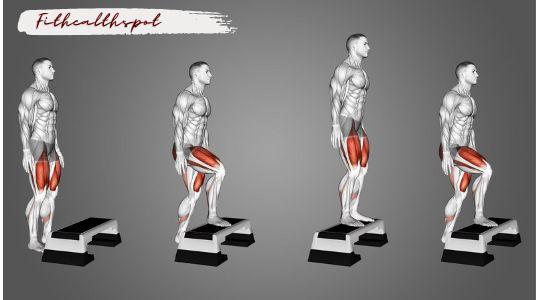
Strong legs are the foundation of any good fitness regimen. Fortunately, calisthenics offers a plethora of exercises to work your lower body effectively.
Key Exercises for Stronger Legs
- Pistol Squats: An advanced version of the standard squat that targets one leg at a time.
- Box Jumps: Great for building explosive strength.
- Lunges: A staple leg exercise that engages quads, hamstrings, and glutes. For a detailed guide on lunges, visit our lunges exercise guide.
- Calf Raises: An essential move for calf development.
A Sample Leg Workout Routine
- Pistol Squats: 3 sets of 8 reps per leg
- Box Jumps: 3 sets of 10 reps
- Lunges: Perform 3 sets of 12 repetitions for each leg.
- Calf Raises: 3 sets of 15 reps
Calisthenics Back Workout
A strong back is not just visually impressive; it’s also critical for overall strength and posture.
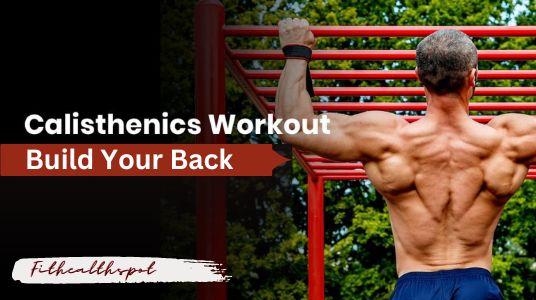
Key Exercises for a Strong Back
- Pull-Ups: The go-to exercise for upper back development.
- Inverted Rows: Excellent for mid-back strength.
- Chin-Ups: Similar to pull-ups but with a different grip, targeting more of the biceps.
- Hanging Leg Raises: Good for the lower back and also engages the core.
A Sample Back Workout Routine
- Pull-Ups: 4 sets of 8 reps
- Inverted Rows: 3 sets of 10 reps
- Chin-Ups: 3 sets of 8 reps
- Hanging Leg Raises: 3 sets of 12 reps
Interested in more back exercises? Check out our lat workouts guide.
Calisthenics Chest Workout
When it comes to building a well-rounded physique, the chest is one of the most prominent and important muscle groups to focus on.
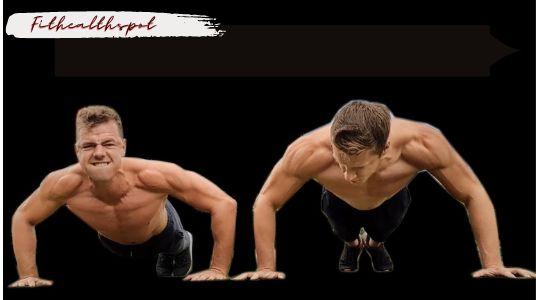
Key Exercises for Chest Development
- Push-Ups: The most straightforward and effective chest exercise in calisthenics.
- Dips: Target the lower part of your chest and also engage your triceps and shoulders.
- Diamond Push-Ups: A push-up variant that places more emphasis on the triceps and the inner chest.
- Wide Grip Push-Ups: Targets the outer parts of your chest.
A Sample Chest Workout Routine
- Push-Ups: 4 sets of 12 reps
- Dips: 3 sets of 10 reps
- Diamond Push-Ups: 3 sets of 8 reps
- Wide Grip Push-Ups: 3 sets of 10 reps
Calisthenics Shoulder Workout
Shoulders play a vital role in nearly all upper body movements, so it’s crucial to have a balanced shoulder workout in your routine.
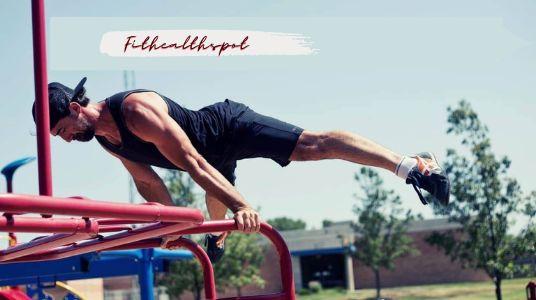
Key Exercises for Strong Shoulders
- Pike Push-Ups: Great for targeting the deltoids.
- Handstand Push-Ups: An advanced exercise that offers an intense workout for your shoulders.
- Wall Walks: Good for shoulder stability and control.
- Arm Circles: An underrated yet effective exercise for improving shoulder mobility.
A Sample Shoulder Workout Routine
- Pike Push-Ups: 3 sets of 10 reps
- Handstand Push-Ups: 2 sets of 5 reps
- Wall Walks: 3 sets of 2 walks
- Arm Circles: 3 sets of 15 circles each direction
Bicep Calisthenics
Who doesn’t want strong, well-defined biceps? Calisthenics offers various exercises that can help you achieve just that
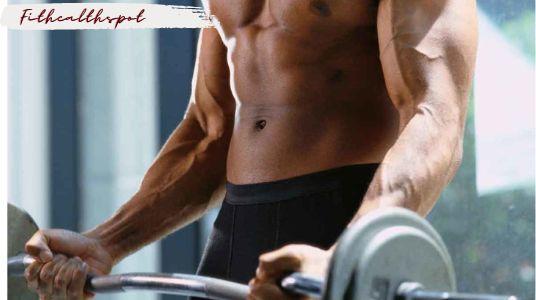
Key Exercises for Bigger Biceps
- Pull-Ups: The underhand grip, or chin-ups, particularly targets the biceps.
- Inverted Rows: Another effective move for bicep development.
- Isometric Holds: Holding yourself in the pull-up or chin-up position for time.
- Australian Pull-Ups: A beginner-friendly exercise that engages the biceps.
A Sample Bicep Workout Routine
- Pull-Ups: 4 sets of 8 reps
- Inverted Rows: 3 sets of 10 reps
- Isometric Holds: 3 sets of 20-30 seconds
- Australian Pull-Ups: 3 sets of 12 reps
Calisthenics Physique

What Can You Achieve?
The calisthenics physique is generally lean and muscular, emphasising functional strength and mobility over sheer size. While you may not get as bulky as traditional weightlifters, you can expect impressive muscle definition and unparalleled functional fitness.
Real-life Examples and Success Stories
- Frank Medrano: Known for his jaw-dropping strength and agility, he’s a great example of what calisthenics can offer.
- Hannibal for King: Famous for his incredible muscle-ups and human flag skills, showing off the high level of strength achievable with calisthenics.
Conclusion
Calisthenics is an incredibly versatile and effective way to work on your fitness, offering a myriad of benefits from functional strength to impressive physique gains. In this comprehensive guide, we’ve touched on everything from getting started in calisthenics to specialised workouts for various muscle groups.
Summary of Key Points
- Getting Started: We discussed the basics of how to start your calisthenics journey, stressing the importance of proper preparation and goal-setting.
- Calisthenics vs. Weights: Both have their merits, but calisthenics often offers a more functional and flexible approach to fitness.
- Calisthenics Benefits: From improving your health to enhancing functional strength, the benefits of calisthenics are manifold.
- Workout Routines: We provided sample workouts for beginners and also for those interested in hybrid calisthenics, along with specific routines targeting legs, back, chest, shoulders, and biceps.
- Equipment: While calisthenics can often be done with minimal equipment, we discussed essential tools like calisthenics bars that can elevate your training.
- Physique: We explored what you can realistically achieve through a dedicated calisthenics routine, highlighting real-life success stories.
Final Thoughts and Recommendations
If you’re looking for a training method that offers both strength and flexibility, can be done almost anywhere, and provides a full-body workout, calisthenics is an excellent choice. As you progress, you can delve into specialised workouts or even hybrid routines that incorporate weights. Make sure to check out our other posts for in-depth guides on specific exercises like lunges, sumo deadlifts, and HIIT workouts to further diversify your fitness regimen.
The most important thing is to start—take the first step, stick with it, and the results will come. Calisthenics is not just a workout; it’s a lifestyle change that offers enduring benefits.
Frequently Asked Questions (FAQs)
How can calisthenics incorporate both isometric and isotonic exercises?
Isometric exercises are those where the muscle length remains constant during the contraction. In calisthenics, examples include planks and isometric holds on the pull-up bar. Isotonic exercises, on the other hand, involve movement, such as push-ups and squats. Both types of exercises have their unique benefits—while isotonic exercises are excellent for functional strength and muscle building, isometric exercises are beneficial for muscle endurance and stability.
Can you do calisthenics every day?
While it’s possible to do calisthenics every day, it’s essential to listen to your body and allow adequate time for recovery. Over-training can lead to fatigue and increase the risk of injury. A balanced approach would involve varying the muscle groups you work on different days or incorporating rest days into your routine.
How long should a calisthenics workout be?
The length of a calisthenics workout can vary depending on your fitness level and goals. However, a good starting point for most people is between 45 minutes to an hour. This gives you ample time to warm up, work through your chosen exercises, and cool down.
30-day calisthenics workout plan?
A 30-day calisthenics workout plan could be an excellent way to kickstart your fitness journey. Such a plan would typically begin with fundamental exercises and gradually increase in intensity and complexity. You might start with basic moves like push-ups, pull-ups, and squats and move on to more challenging exercises like pistol squats and handstand push-ups by the end of the month. For a sample 30-day plan, check out our Beginner’s Routine section.

